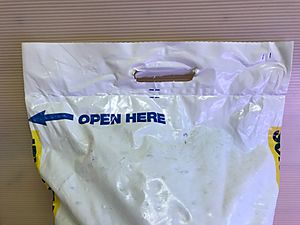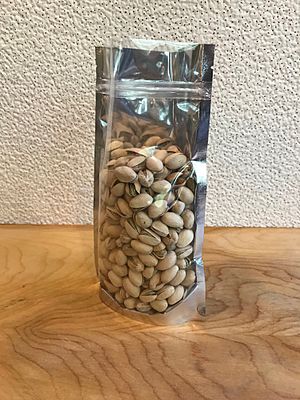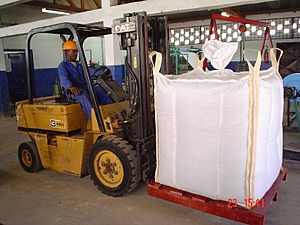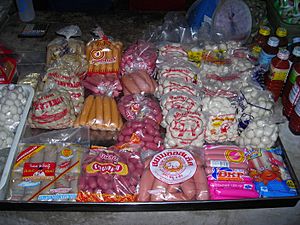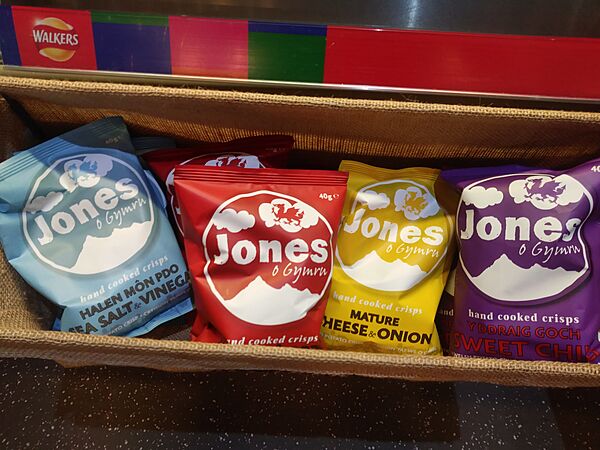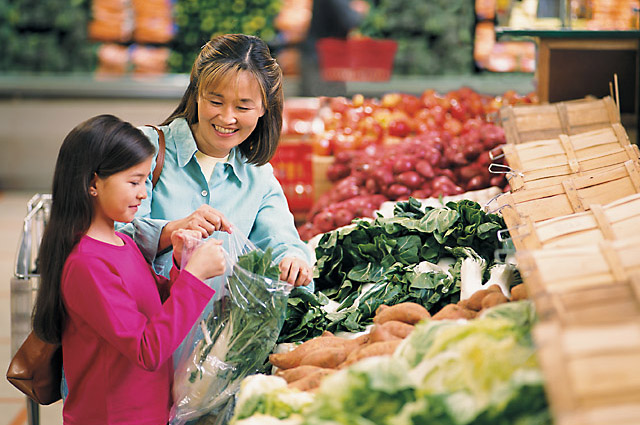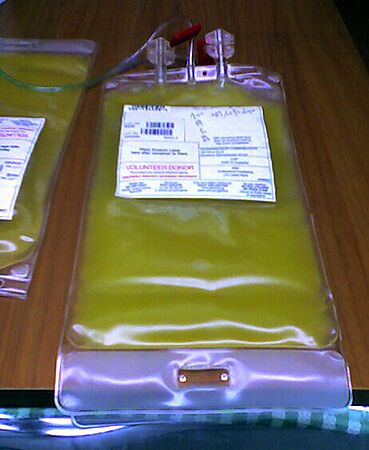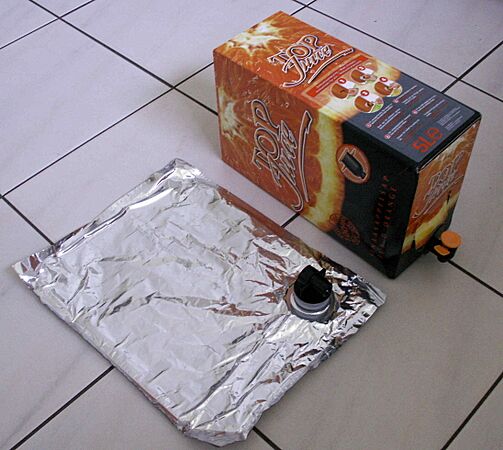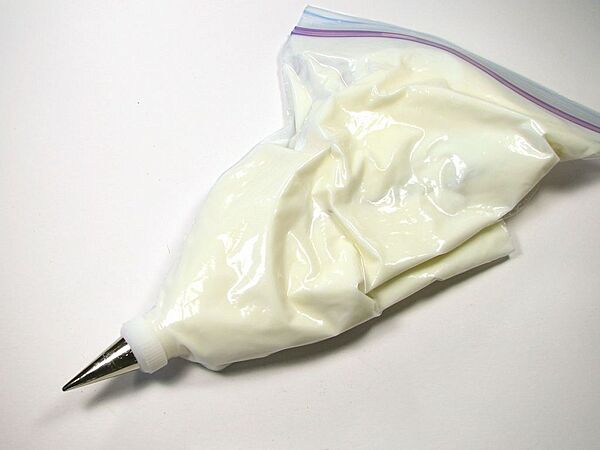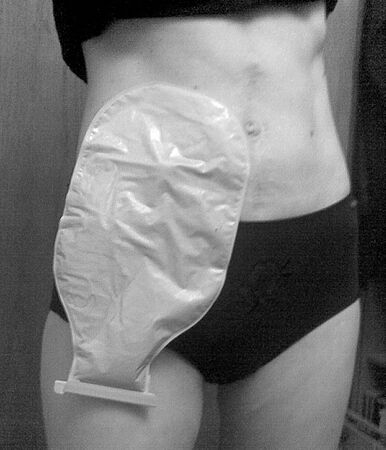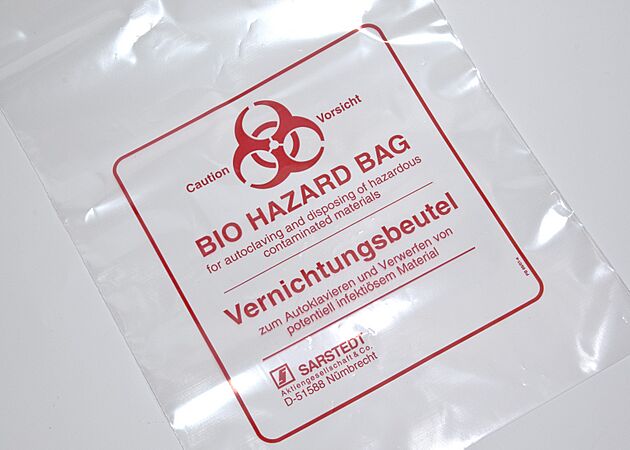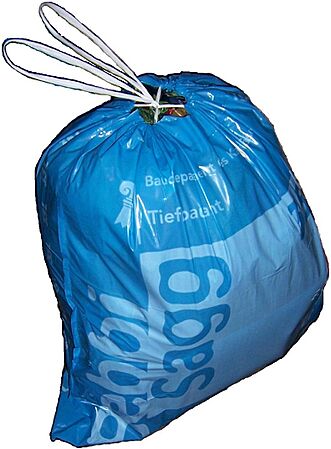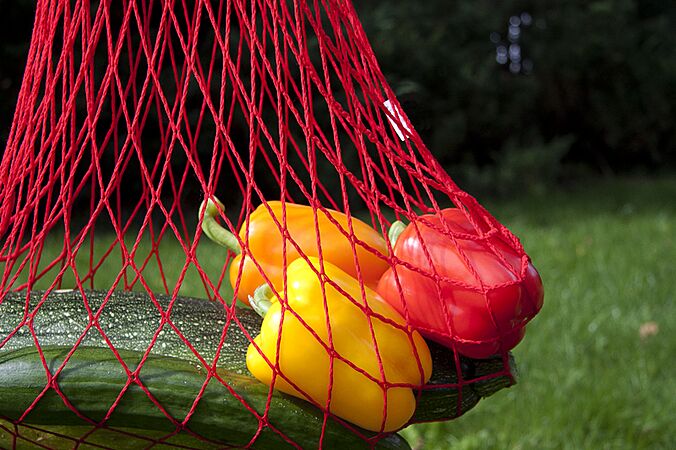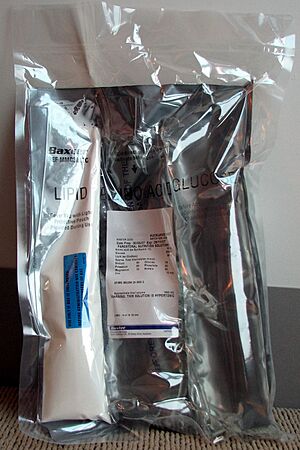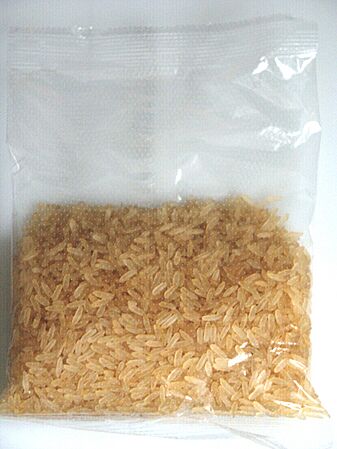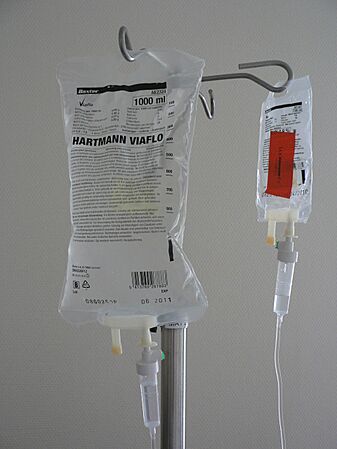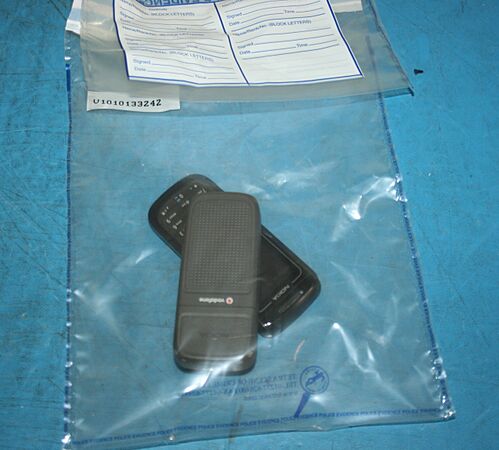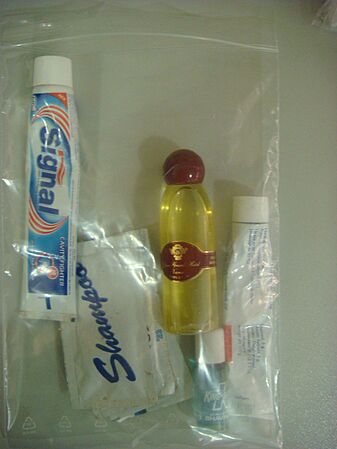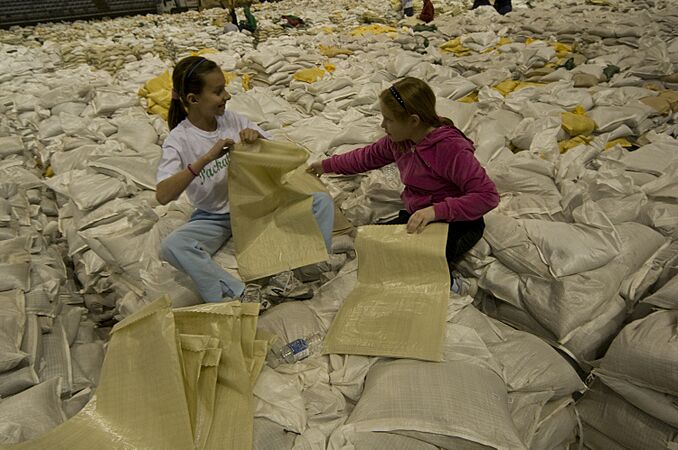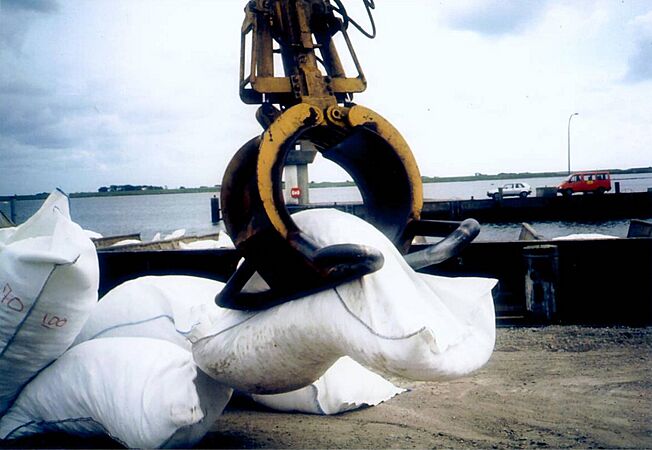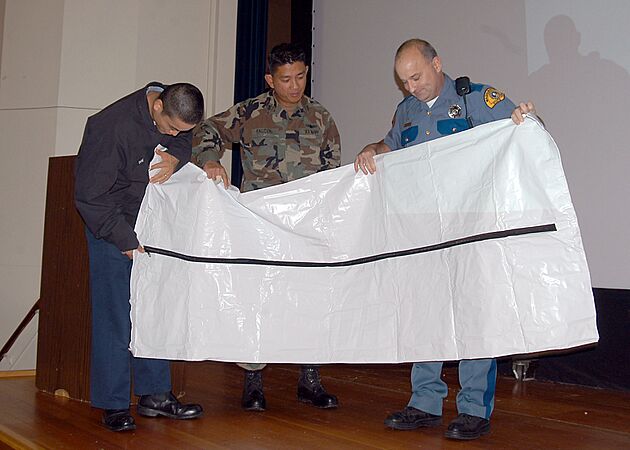Plastic bag facts for kids
A plastic bag is a type of container made from thin, flexible plastic. You might also hear them called poly bags or pouches. They are used to hold and carry many different things, like food, powders, ice, magazines, and even waste. Plastic bags are a very common way to package items.
Most plastic bags are sealed using heat, which melts the plastic edges together. Some others use glue or are sewn.
Many countries are starting to ban or limit the use of lightweight plastic bags. This is because plastic never truly disappears; it just breaks into smaller and smaller pieces. This causes lasting pollution and harms our environment. Every year, people use and throw away about 1 to 5 trillion plastic bags around the world. A plastic bag is often used for only about 12 minutes before it's thrown away.
Contents
What Are Plastic Bags Used For?
Plastic bags come in many different designs and have special features. Some bags have extra folds called "gussets" that let them hold more items. Special "stand-up pouches" can even sit upright on a shelf or in your fridge. Some bags are made to open easily or can be closed again after you open them. Many also have handles cut into them or added on, so they are easier to carry.
Bags are made from different types of plastic films. The most common type is called Polyethylene. Other types, like layered plastics, are used when the bag needs to be extra strong or have special features. The plastics used for single-use bags mostly come from fossil fuels. Did you know that International Plastic Bag Free Day is celebrated every year on July 3?
Plastic bags often use less material than similar containers like boxes or jars. This means they are often seen as "reduced packaging." In 2009, a study in Germany found that oil-based plastics, especially if they are recycled, can be better for the environment than compostable plastics. This is because of how the raw materials for compostable plastics are made.
Plastic bags can often be recycled if they are made in a certain way. They can also be burned in special facilities to create energy. If they end up in proper landfills, they are stable and don't cause harm. However, if plastic bags are thrown away carelessly, they can become ugly litter and hurt wildlife. Plastic bags are not recycled as much as they could be because it's hard to separate them from other materials. But many people do reuse their plastic bags at least once before throwing them away.
Some bags have special features like hanging holes, tape to attach them, or security seals. Some are designed to open in a controlled way. Bags that can be closed again, like those with zipper strips, are common for kitchen bags or some foods. Some bags are sealed to show if someone has tried to open them, like those where a special outer seal must be torn first.
"Boil-in-bags" are often used for frozen foods, sometimes even whole meals. These bags are usually made of strong, heat-sealed nylon or polyester so they can handle boiling water. Some bags have tiny holes or are porous, letting hot water reach the food inside, like for rice or noodles. Grocery stores give out the most single-use plastic bags.
"Bag-in-box" packaging is often used for liquids, like box wine or large amounts of other liquids for businesses.
How Plastic Bags Help in Medicine
Plastic bags are very useful in hospitals and for medical care. Because plastic film is non-porous (meaning liquids can't easily pass through it), these bags are great for holding infectious body fluids safely. Other bags made from nonwoven plastics can be sterilized and stay germ-free.
Bags can be made in very clean, controlled factories, so they are safe to use when preventing infection is important. They are also light and flexible, so patients can carry them or have them nearby without feeling uncomfortable, unlike heavy glass bottles. They are also cheaper than reusable options like glass bottles. Studies have shown that plastic wraps or bags can help keep very small babies warm, preventing them from getting too cold.
Large Industrial Plastic Bags
"Flexible intermediate bulk containers" (FIBCs) are very large industrial bags. They are usually used to hold huge amounts of powders or other materials that can flow. These big bags are typically made from strong, woven plastic fibers.
Plastic Shopping Bags
Open bags with handles are used in huge numbers, especially for shopping. Stores often give them out to make it easier for shoppers. Some stores now charge a small fee for a bag. Stronger, reusable shopping bags are often seen as better for the environment than single-use paper or plastic bags. Because of environmental concerns and litter, some places are working to stop the use of lightweight plastic bags.
The Story of Shopping Bags
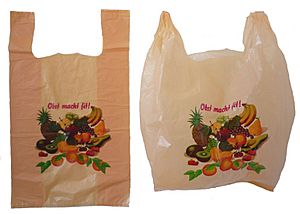
Ideas for making plastic shopping bags appeared in patents in the 1950s. But the modern, lightweight shopping bag we know today was invented by a Swedish engineer named Sten Gustaf Thulin. In the early 1960s, Thulin created a way to make a simple, one-piece bag by folding and cutting a flat tube of plastic. His company, Celloplast, patented this design worldwide in 1965.
From the mid-1980s, plastic bags became very common for carrying groceries from stores to homes all over the world. As plastic bags started to replace paper bags, and other plastic items replaced glass, metal, and wood, there was a big "packaging war." Plastic shopping bags were often at the center of these public debates.
In 1992, a company called Sonoco Products patented a "self-opening polyethylene bag stack." The clever part of this design was that when you pulled one bag off the rack, the next bag in the stack would automatically open up.
How Plastic Bags Are Used Around the World
It's estimated that about one trillion plastic bags are used and thrown away worldwide each year. But how many plastic bags people use can be very different from one country to another. For example, the average person in China uses only two or three plastic bags a year. But in other countries, the numbers are much higher: Denmark (four), Ireland (20), Germany (65), and Poland, Hungary, and Slovakia (more than 400).
Many cities and regions have banned plastic bags in grocery stores or added a small charge for them. In September 2014, California became the first U.S. state to pass a law banning their use. This law also helped local plastic bag makers switch to making stronger, reusable bags that stores would sell instead of giving away. In India, the government has banned plastic bags thinner than 50 microns. In 2018, Montreal, Canada, also banned plastic bags, and Ottawa is planning to do the same.
Plastic Bags and Our Planet
Plastic bags are mostly made from oil and natural gas. About 8% of the world's oil resources are used to create plastic bags, which is about 12 million barrels of oil every day. Half of this oil is used as the material for the bags, and the other half is used for the energy needed to make them. If we keep using oil at this rate, it will eventually run out, affecting many things that rely on it. Making plastic bags also causes air pollution.
Regular plastic bags cannot truly break down naturally. Instead, they "photodegrade," which means sunlight breaks them into smaller and smaller toxic pieces. This process can take up to 1,000 years! In the 2000s, many stores started using different types of biodegradable bags, hoping they would be better for the environment.
When plastic shopping bags are not thrown away properly, they can end up in rivers and then flow into the ocean. To reduce plastic pollution in the ocean from single-use shopping bags, many places around the world have put bans or fees on them. It's estimated that 300 million plastic bags end up in the Atlantic Ocean alone. When plastic bags float in the water, they can look like jellyfish. This is very dangerous for marine animals like Leatherback sea turtles, who might eat them by mistake. Once an animal eats plastic, it can get stuck in their digestive system and lead to their death. After the animal's body breaks down, the plastic goes back into the environment, causing more problems.
Sea birds are also affected. They hunt by sensing a certain smell produced by algae. Plastic is a good place for algae to grow, so sea birds might mistakenly eat a plastic bag instead of the fish they are trying to catch.
Even though plastic bags can be bad for the environment if not disposed of correctly, some government studies have found that they can be an environmentally friendly option for carrying things. For example, a Canadian recycling agency noted that regular plastic bags use little material and energy to make. They also pointed out that many people reuse plastic bags as garbage bags, which is good for the environment. Studies from Denmark, the United Kingdom, and Clemson University have found similar results.
Even though they are plastic, these bags usually cannot be recycled in your home recycling bin. The material often jams the machines at recycling plants, which stops the recycling process and slows things down. However, plastic bags are 100% recyclable! To recycle them, you usually need to take them to a special drop-off location, often at a grocery store or other large retail store.
Keeping Kids Safe
Thin, soft plastic bags, especially those from dry cleaning, can be dangerous because they can cause suffocation. Because of this, about 25 children in the United States suffocate each year due to plastic bags, and almost nine out of ten of these children are under one year old. This is why some bags have warning labels to alert parents about the danger to small children.
Many Uses of Plastic Bags
See also
 In Spanish: Bolsa de plástico para niños
In Spanish: Bolsa de plástico para niños


